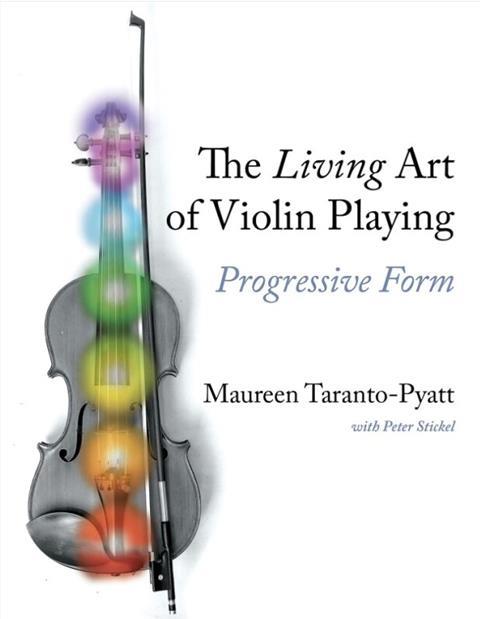Philippa Bunting reviews Maureen Taranto-Pyatt’s well-described account of her theories on ’progressive form’

The Living Art of Violin Playing: Progressive Form
Maureen Taranto-Pyatt, Peter Stickel
340PP ISBN 9780253066602
Indiana University Press $80
The Living Art of Violin Playing is a detailed account of what its author, violinist Maureen Taranto-Pyatt, terms Progressive Form: ‘a system that can be used both as a reference for individual issues or as a guide to a revamping of technique’. Developed over the course of many years of study and self-reflection, and honed over years of working with others, this system was born from the desire of the adult violinist to regain ‘magical movement’ – the youthful ease and naturalness with which she first approached the instrument.
Having studied with Victor Romanul and Max Hobart, Taranto-Pyatt also acknowledges the deep influence of the works of Carl Flesch, Yehudi Menuhin and, perhaps most strongly, Ivan Galamian. Her thesis is supported not only by deep knowledge of anatomy and physiology, but also of the technical barriers that can creep in, and indeed become entrenched in the course of a life in music. The fact that the author is a poet as well as a musician resonates throughout the book, with a continual stream of lively metaphors and vivid descriptions shedding light on the complex business of organising the human anatomy around what can be at times the most awkward of instruments.
Those coming to the book with the author’s first intent in mind – i.e. to tackle a specific technique that is holding back their musical progress, or preventing them from realising their musical intentions – will typically find first a clear description of the movement required accompanied by either a visual image or creative visualisation. Those coming to it as a resource with which to spend a good deal of time, looking to develop technique methodically, will find much food for thought. It will require, as the author acknowledges in the preface, ‘serious study’. Both types of reader will undoubtedly gain greater kinaesthetic understanding of their own bodies in relation to violin playing and, further, stand to gain powerful insight into issues that could be holding them back.
Read: To plan or not to plan? - Teacher’s notes with Philippa Bunting
Read: What’s a ‘bad’ student? - Teacher’s notes with Philippa Bunting
The book is a very handsome volume, printed on high-quality paper in an elegant serif font, which indicates seriousness. The one feature which is a little out of step is the black-and-white photos that illustrate the author’s points throughout. These usefully complement the written text, illuminating the lucid explanations with physical examples: however they are sometimes a little dark, and small, to see with complete clarity what is going on.
In search of balance, harmony and the liberation to be gained by eliminating unnecessary tension, the author also acknowledges the psychological, even spiritual issues, that may underlie problems with tension or poor body alignment more generally. This only serves to reinforce the impression that this book has been written with great empathy, the product of years of self-scrutiny and the desire to share with others the results of deep thought, reflection and wisdom.
PHILIPPA BUNTING










































No comments yet